How a Doctor-in-Training Bootstrapped One of the World’s Most Popular Med Ed Startups
By The Twist Team

Geeky Medics is one of the most popular online medical education platforms in the world, with students and healthcare professionals in over 150 countries relying on the service’s flashcards, interactive quizzes, examination videos, and anatomy notes, to pass exams for university training and continuing education.
The site has 3 million web views a month, 600,000 YouTube channel subscribers, apps for iOS and Android, and a podcast, accessed by doctors, nurses, paramedics, physician associates, dentists, pharmacists, midwives, and others in the health field in over 150 countries.
Lewis Potter, the company’s CEO, started it simply as a side project, when, as a fourth-year medical student, he found himself “frustrated that online medical education was a bit rubbish.” He was not alone. The videos gained a growing audience from medical students around the world. But early on, Lewis wasn’t sure if he could balance growing an online medical education business with the intensive training required for doctors, which includes not only medical school but years of residency in one’s specialty.
He says a big reason why he eventually was able to run Geeky Medics while doing his training was finding digital tools like Twist, which helped him grow the business in a manageable way. Lewis uses Twist to run all aspects of the company, from content creation to app development to customer support. As he started earning revenue and hiring contractors, Twist’s async-first design enabled him to manage a company that’s no one’s full-time job — including his. He can accommodate his schedule as a physician-in-training, and his global freelance team’s schedule, while growing a business that now earns revenue from several sources.
“Twist is slowly becoming the base operating system for the entire business,” Lewis says. “Over time, I've invited more people in. And it's been quite organic. It's easy for people who maybe aren't super technical. They feel quite at home.”

From side project to multi-platform company
10 years ago, Lewis was a fourth-year medical student at Newcastle University in the UK, learning how to examine patients and perform basic medical procedures. During that time, Lewis often turned to the internet, looking for relevant educational resources, including demonstrations of the skills he needed to learn:
“The problem in med school is you get one demonstration in real time with a senior doctor. And then after that, you're left to practice with each other. So it's really hard if you don't have a reference video to go back and recheck. You're just relying on your memory from that one time you were shown.”
Coming up empty, he bought a video camera and convinced two of his friends to record a mock heart and lung examination and post it on YouTube. He continued to post videos like these as a side project, thinking it would be of benefit to other medical students.
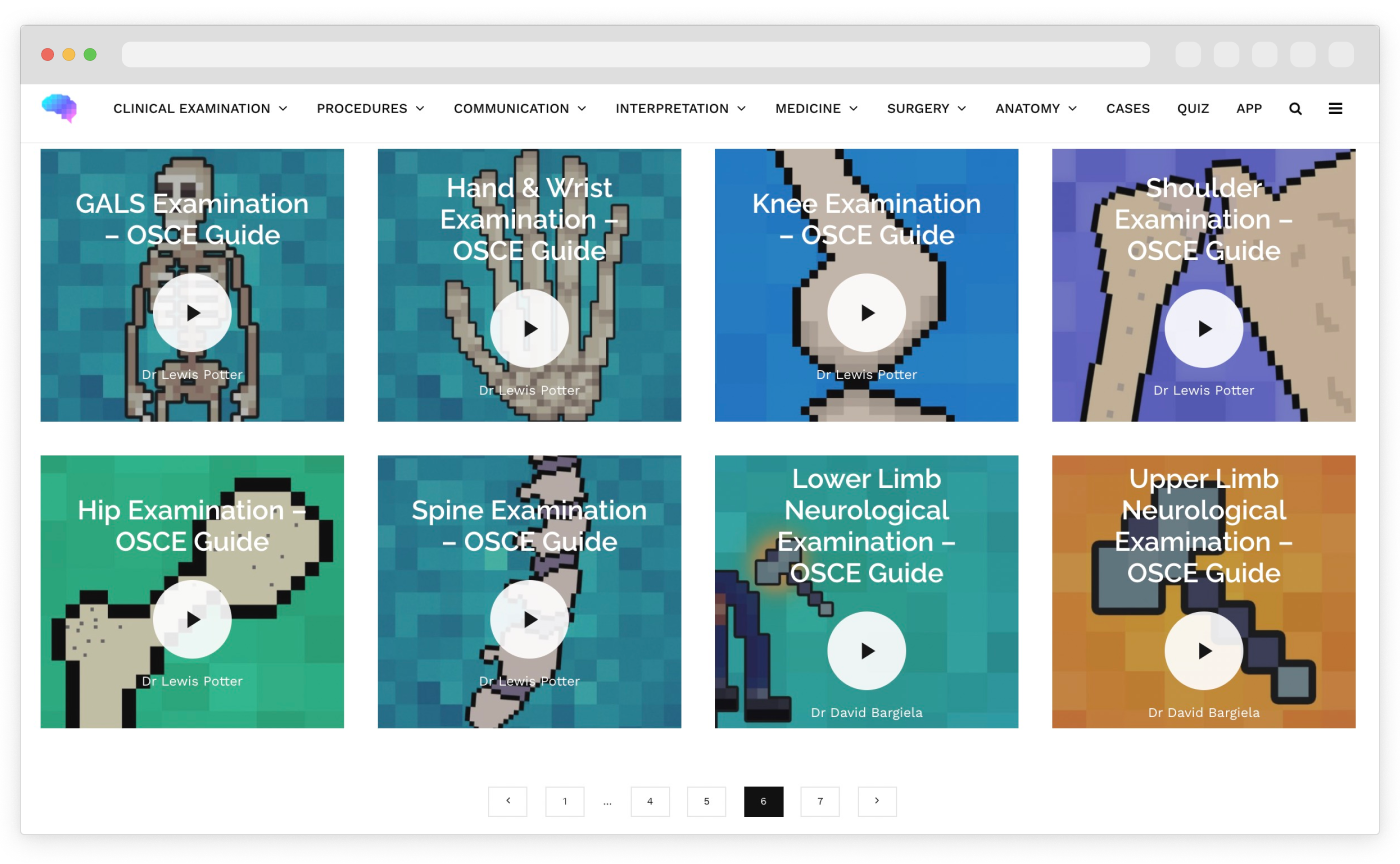
Over time, the content attracted a following, and Lewis began to receive emails from medical students and practicing physicians offering to write articles or act in videos. He started to bring on contributors to create a growing suite of content, which now includes videos, a podcast, written guides, and illustrated flashcards.
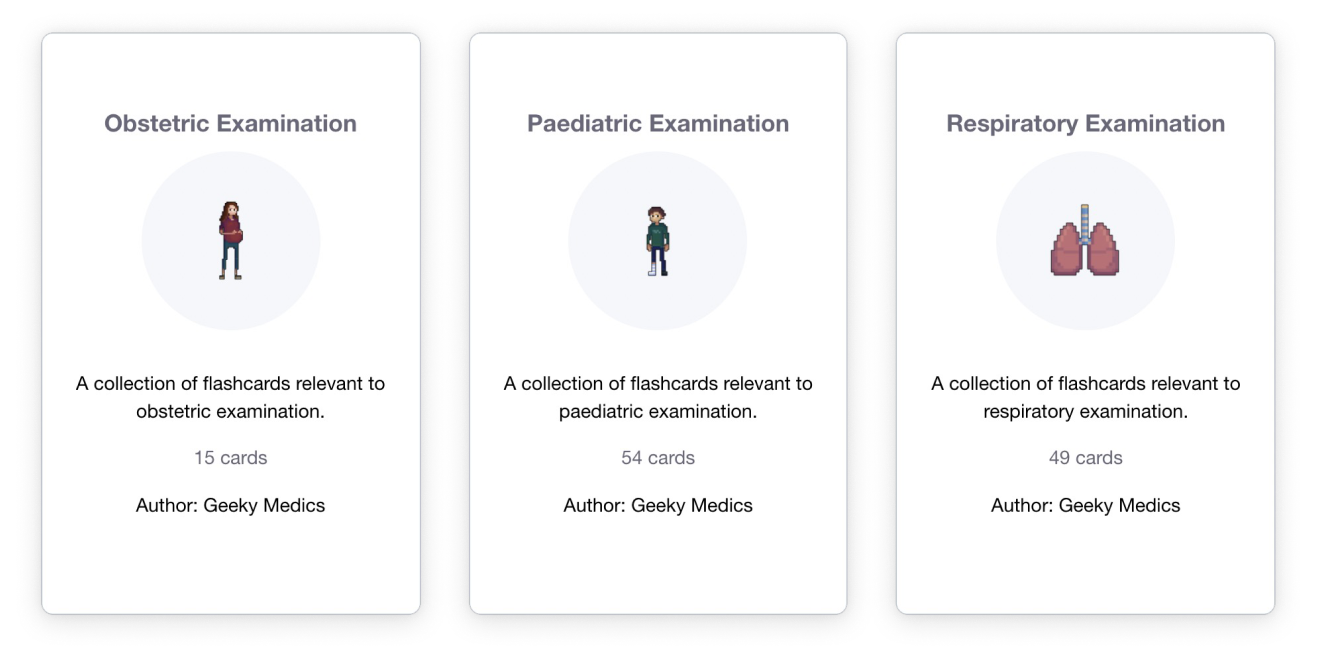
According to a 2020 profile in the medical journal BMJ: “Medical students worldwide recognise the name Geeky Medics, and the distinctive pixelated images that have become a large part of their brand...The accessibility and quality of the resources are what make them stand out for medical students.”
In lower income countries where there are shortages of doctors to teach medical students, Geeky Medics fills a particular need.
“Having videos that students can watch to learn how to perform a particular skill is particularly valuable in low resource settings because in-person demonstrations by senior clinicians are often less accessible,” Lewis says.
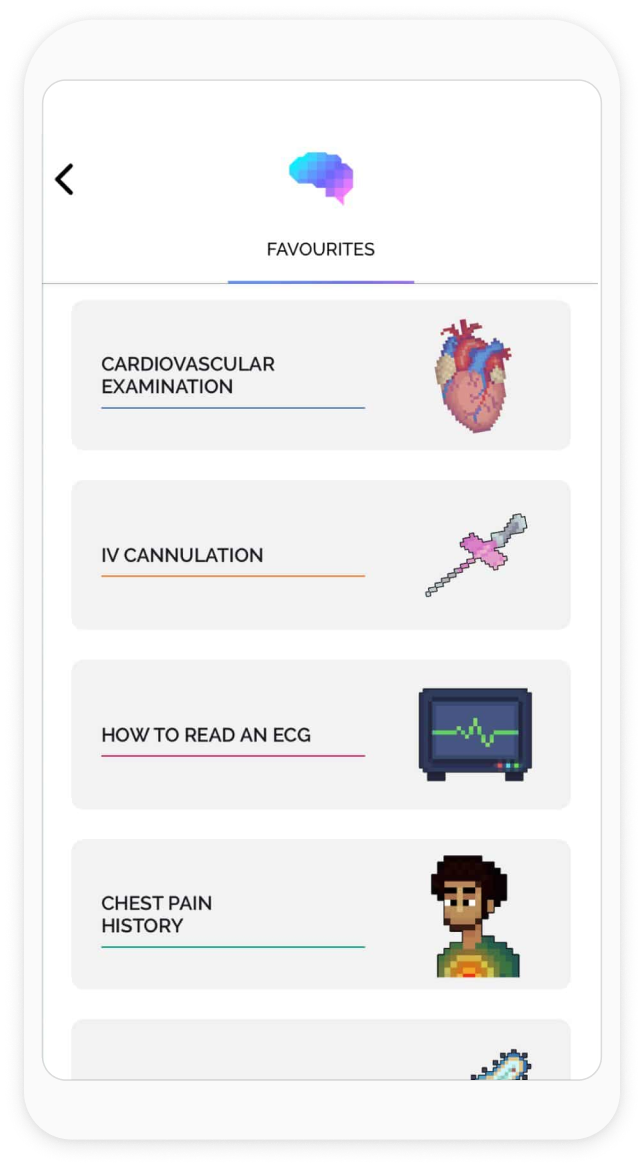
Lewis never expected he’d get to the point where his medical student side project would become a profitable business. He now earns revenue from the apps, YouTube and Google ads, and premium content like interactive checklists and a quiz platform. “It's all grown slowly on the side over that 10-year period. And now I'm able to pay myself a salary and some part-time developers’ and editors’ salaries,” he says.
He continues to hear from grateful students who say the site helped them become practicing healthcare professionals.
“I get emails regularly from people who've used it to pass their exams or throughout medical school,” he says. “And because it's been around so long now, there are doctors [who used Geeky Medics during their training] who are teaching medical students using the resources that we provided.”
How Twist helps Geeky Medics work async-first
Lewis learned about Twist when he was researching “bootstrapped” startups — companies that are built through savings and cash from sales rather than outside funding from investors. He came across Doist CEO Amir Salihefendic, who had started Todoist and then Twist this way. Lewis preferred this self-funded approach to seeking venture funding, which would likely require a speed of growth that wouldn’t be sustainable while he trained as a physician, and that didn’t really feel like his style.
“It was really nice when I heard the term ‘bootstrapping’ and then found there's a whole community of people doing similar stuff,” he says.
He tried Slack at first but found it to be “noisy and unstructured.” “There's just this one continuous chat. And trying to maintain separate threads of different things that are going on is really hard,” he says.
“We've gone stretches of six-plus months between having a call or chatting, despite us working constantly every week with each other. That just shows the power of async.”
He says Twist, in conjunction with Todoist, have been critical in helping him grow a startup and work with freelancers. Because he’s at the clinic three days a week, he appreciates that Twist lets him keep things moving with his contractors in the U.K., Canada, New Zealand, and Australia while not needing to check in constantly. He encourages his team to work asynchronously as well.
“Whenever I add someone to Twist, I basically tell them straight away that it's asynchronous. And that if they get a message or a reply — even if it's at a weird time, which it often is because I'm often replying at weird times — there's no expectation that they reply to that quickly. I think it's important to set that up straight away because I know people feel pressure when they see someone reply to them quickly,” says Lewis.
He and his lead developer are rarely ever able to have a call or chat in real-time because of their schedules. “We've gone stretches of six-plus months between having a call or chatting, despite us working constantly every week with each other. That just shows the power of async.”
How Geeky Medics uses Twist
Twist allows Lewis to stay on top of the many different areas of his business that require attention. “Companies are so messy, generally. And particularly if you're using contractors, it's just all so unstructured,” he says. “Because Twist doesn't impose a certain way of doing things, I think, it's quite a flexible tool.”
Producing content
Geeky Medics uses Twist to manage an editorial workflow for several different types of content. Lewis has created a channel for each area, such as anatomy, quizzes, and podcast, where he discusses ideas with editorial contributors.
“Twist is the place where we get to have really raw discussions to decide how big a feature should be, what it should contain, and to scope out projects,” says Lewis.
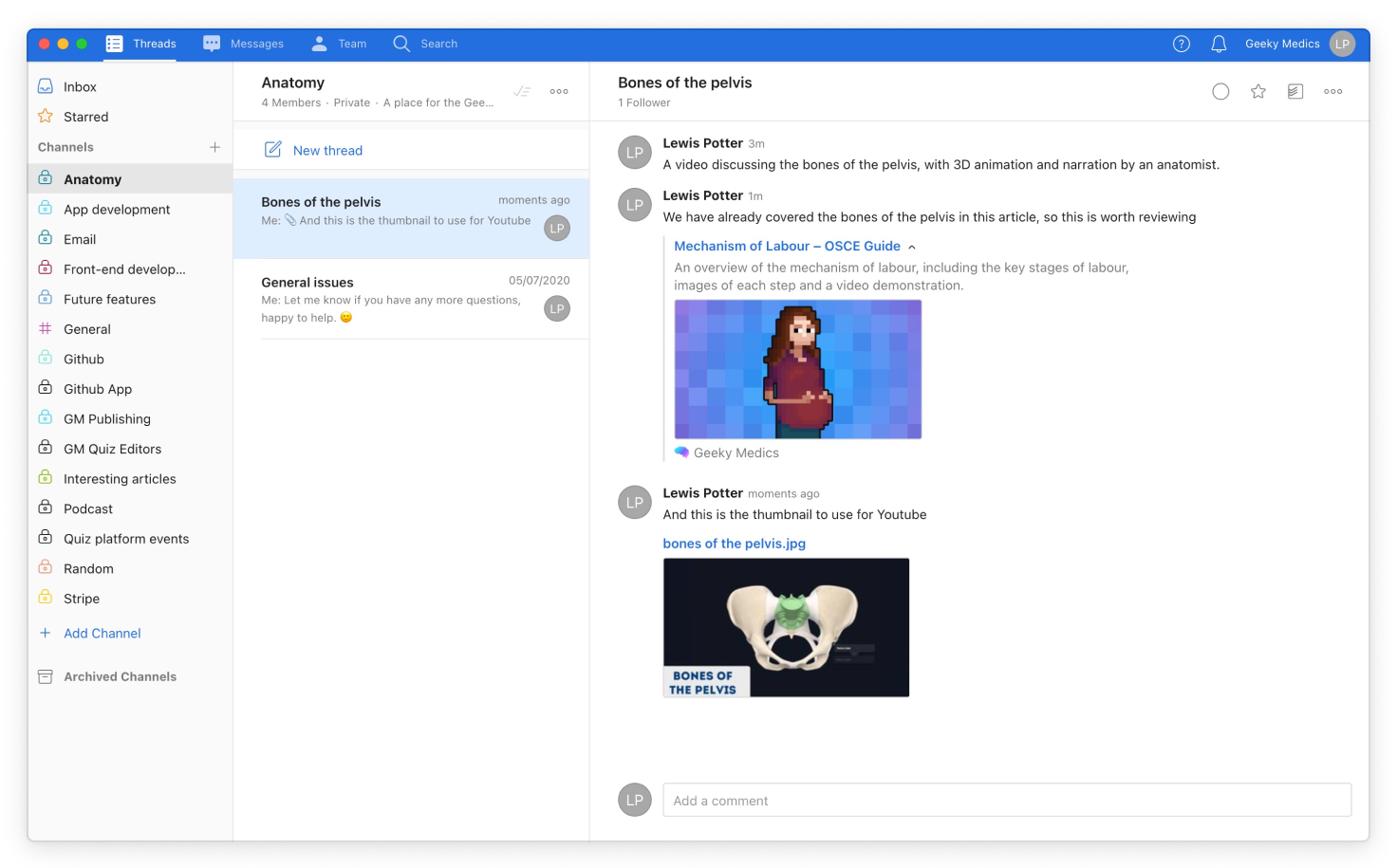
In the podcast channel, he creates one thread for each episode, where he and his host and editor identify guests, coordinate production, and flesh out a topic — which have in the past included exploring careers in areas like palliative care or providing healthcare in conflict zones. A custom integration they’ve set up with Transistor.fm using Zapier even auto-posts the podcast link when it’s live.
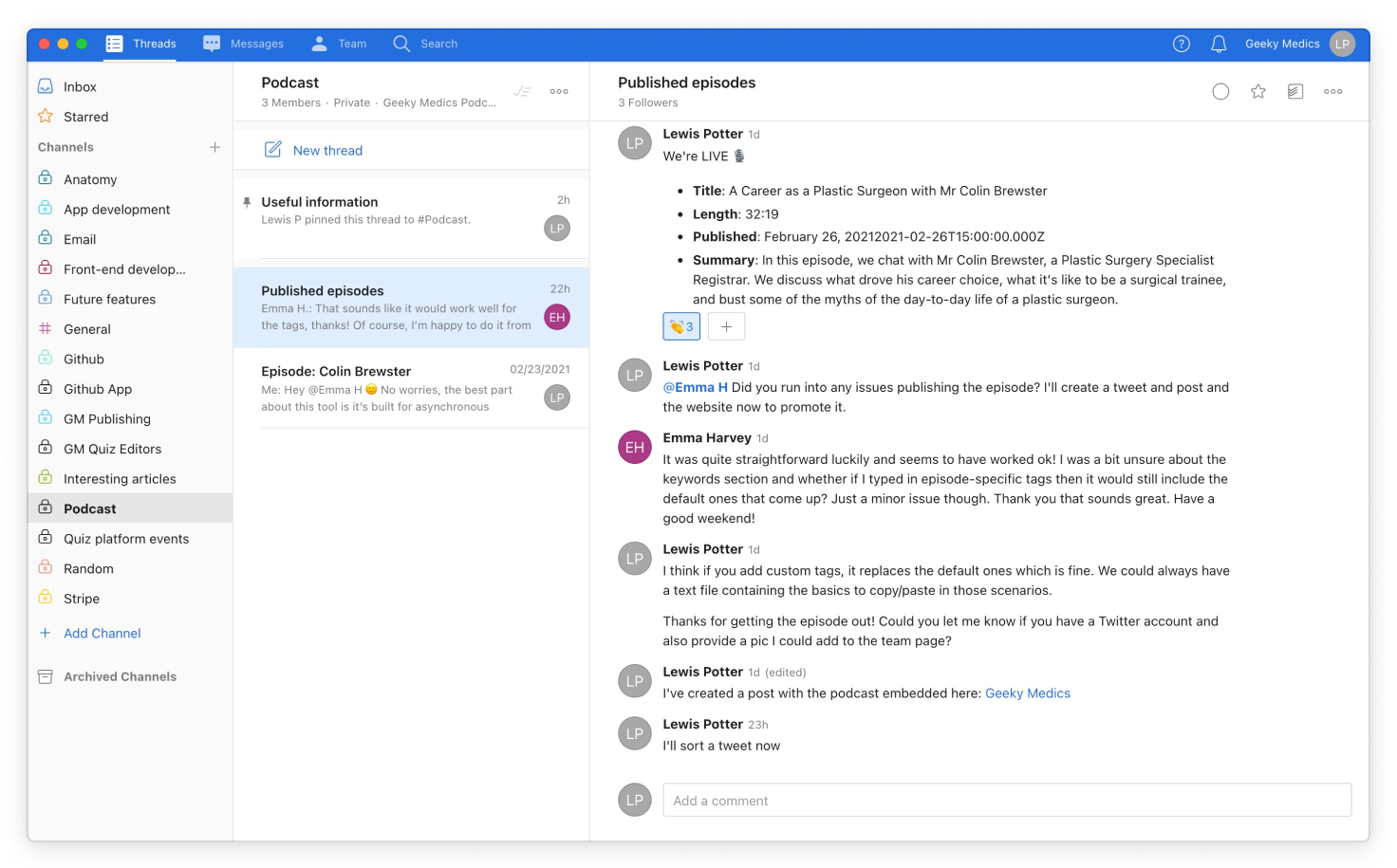
To keep on top of the quiz platform, which is based on a lot of user feedback, Geeky Medics’ developer set up a custom integration to update a thread whenever a user has submitted a question or comment, with a link that a team member can click on to respond.
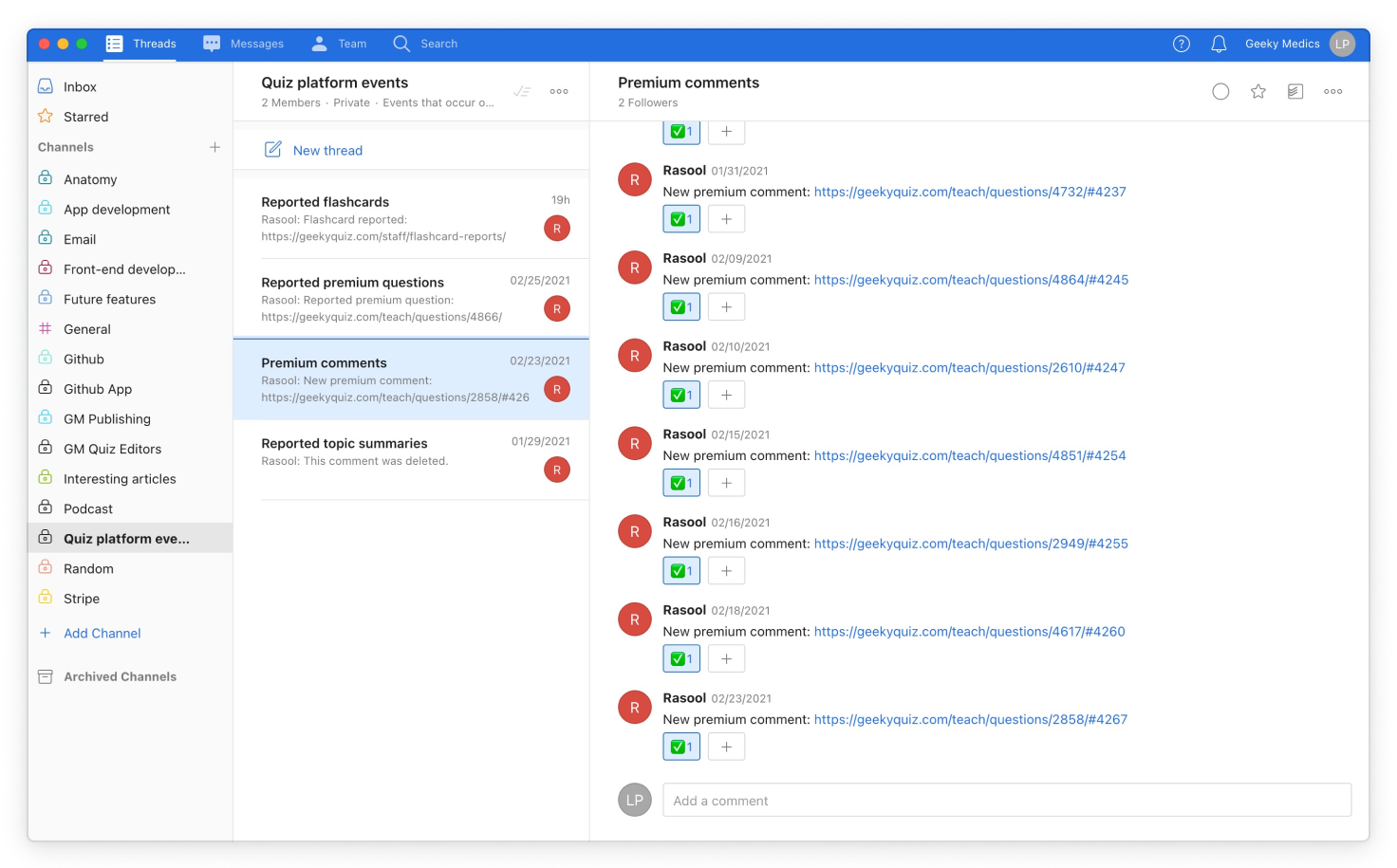
He and his editorial team also have a channel to discuss ideas for future content areas — “random things like interesting articles where we can just discuss random geeky things,” says Lewis.
Running operations
Geeky Medics relies on Twist to keep the operations of the company centralized. To keep track of revenue, Lewis’s developer built an integration that updates a thread whenever there’s a new payment from Stripe. The team also has a channel with threads for different types of automated updates from GitHub, which they use for software development. This helps Lewis stay current when his developer has added new code to the quiz site, for instance, or when technical problems arise, like the site going down. “Twist does a good job of presenting the key GitHub data in a nice format when I'm on the move,” he says.
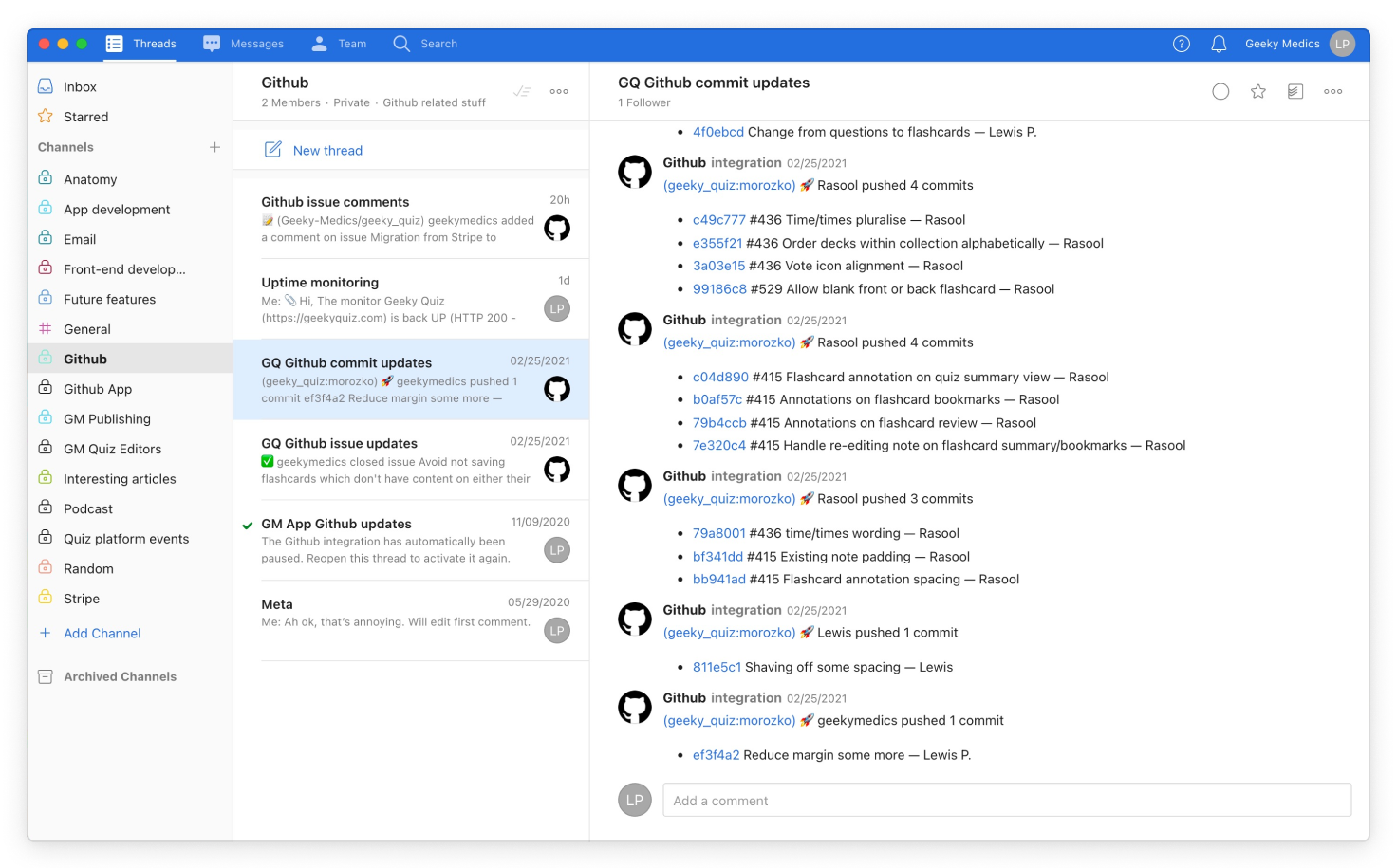
Geeky Medics’ tips for using Twist
Twist’s customizability has allowed Lewis to “plug it into the weird structure that is Geeky Medics.” Here are some of the company’s favorite uses:
- Use channels for different company areas: Maintain a clear head about the different areas of your business by designating channels for each.
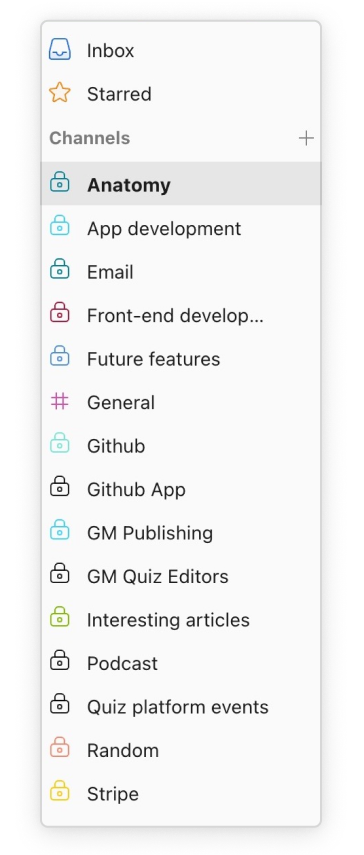
- Stay up-to-date with integrations: If you own a business, you probably have many different apps to keep up with, such as payment systems, customer service forms, or registrations. Keep them centralized via integrations that post new activity to specific threads, such as Geeky Medics’ Stripe payment and GitHub updates.

- Don’t let things fall off with the Inbox: If you’re involved in every area of your business, Twist’s Inbox helps keep track of just the new comments that you’ve been tagged in.
- Show a task is completed with emoji reactions: To show others you’ve completed a task, add a checkmark as an emoji reaction to the original comment or message.

- Mute threads: If you have threads with automatic updates that don’t need to be addressed, like Geeky Medics’ Stripe payments, mute the thread so your inbox is less noisy. (Don’t worry — you can unmute if needed!).
- Move email conversations to Twist: Keep communications manageable and centralized by moving conversations with people you regularly work with into Twist. You can invite people into Twist as guests who will only have access to the channels you’ve specified.
In the early Geeky Medics days, Lewis didn’t expect he could build the company while continuing to train as a physician.
“There were lots of users emailing about wanting new articles covering stuff or new videos. I wasn't tracking anything. And I was losing people's emails, and it was all just really bad,” he reflects. “I thought about giving up the project because I felt so overwhelmed. I was working full time as a doctor at that time as well. And there just wasn't enough time in the day.”
Figuring out a system for communication and project management enabled him to make it all work, he says.
“Being able to lay everything out and be like, ‘Okay, today I just need to focus on these 4 things, and if I do these 4 things, then I've made some progress. And I know there's a thousand other things. But they're not for today,’ he says. “These tools have brought order to the chaos that was Geeky Medics.”
You don’t need to use Twist to get a ton of value out of this newsletter and community. But if the topics we talk about resonate with you, there’s a good chance the app will too. See what makes Twist different →
🌎 Built asynchronously by the fully remote team at Doist
